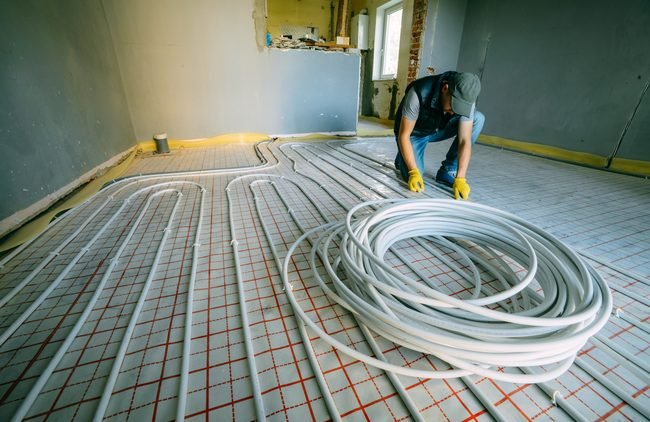Fundamentals of Electric Radiant Floor Heating – Part 1
Using a network of pipes or wires running under surface flooring to gently radiate heat into a room, radiant floor heating systems provide a proven method for heating newly added rooms where it is impractical to expand HVAC ducts. They are also considered very effective for cold-to-the-touch surfaces like ceramic tile, stone, and concrete. The bathroom is another area where radiant heating will be appreciated during cold winter days. Tall and large rooms are also good candidates because the source of heat comes from the floor level, where heat is needed.
There are different types of radiant floor systems. Perhaps the most popular is the electrical system, where a mesh of wires or loops of single wires are installed, spanning the area underneath the floor. Electrical systems generate heat through the process of natural resistance when current is conducted through the wires.
Typical System
Today’s standard electric radiant heating systems utilize thin heating cables that are installed beneath the floor’s surface, usually ceramic tile, heating the floor like an electric comforter. Usually, they function with their own 15 or 20 amp electrical circuit, which a wall thermostat controls. Typically, these systems are purposed as supplementary heating sources and installed in remodeled areas.
One type of system will use electrical matting strips laid underneath a floor. Fixed in place by thin-set mortar, they will be linked and connected to a line-voltage thermostat and electrical circuit. Mat systems allow sections to be cut to shape for irregular areas. A proper installation will have mats covering almost the entire floor. However, a configuration can be designed to limit heating to the areas most used.
A bathroom system will typically involve installing individual wires looped across the floor at three inch intervals then secured with thin-set adhesive. When the floor surface is stone or ceramic tile, wires or electrical mats will be first installed on top of a cement board underlayment.
Part 2 will discuss Advantages & Disadvantages and Expenses.
Electrical Peace of Mind
Providing professional electricians since 1988 in Maryland, Cook Electric is the company you can rely on for all your electrical service needs. For knowledgeable, fair, honest, reliable, and conscientious service, call Cook Electric today at (410) 266-9040. We will be very glad to help you.

